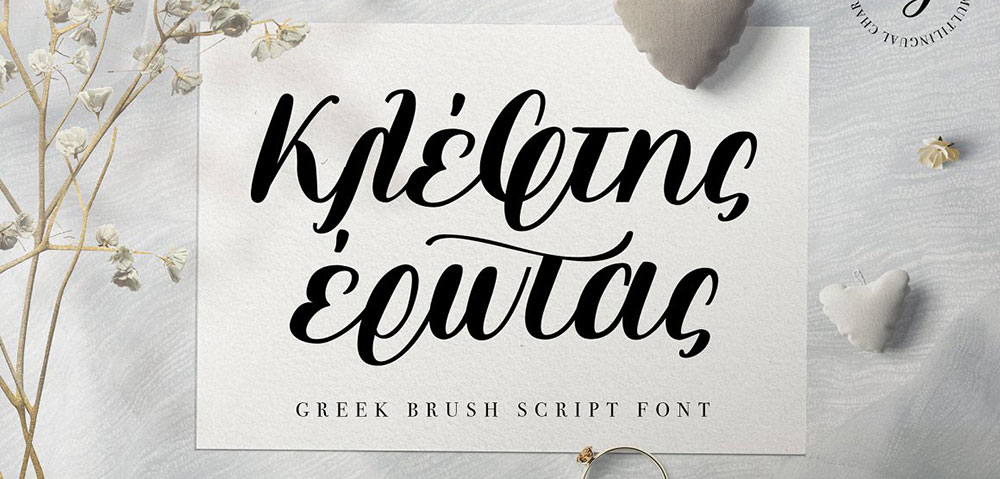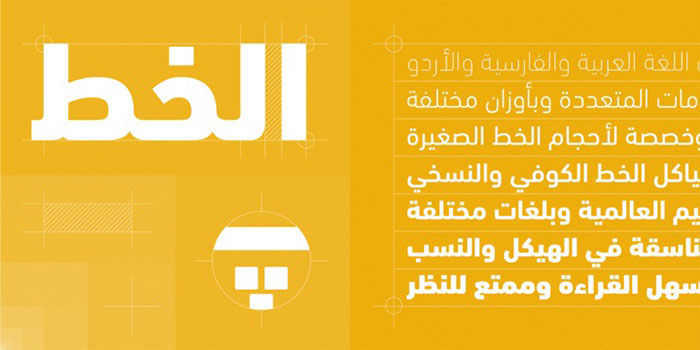If you’re a subscriber you probably know that I like to make your life easier and create selections of the best resources on specific categories, like the one we have today: Free Roman and Greek looking fonts.
I said Greek font looking because the Greek fonts are not all with the Greek alphabet but instead, show a Greek influence.
I hope this collection will help you select one that you will use in a design project with an ancient theme that will need a specific font like these.
Greek and Roman fonts (an overview)
- GreeKish
- Capitalis Goreanis
- Atene
- Ifao N Copte
- Archeologicaps
- 300 Trojans
- Greek Regular
- Gelio
- Aegis
- Cleopatra
- ODIN’S SPEAR
- Naxos Bold
- Grecian Formula
- Adonais
- Satyr
- Xtra
- Art Greco
- Pirho Herakles
- Romance Fatal
- Dalek
- Elektra
- Marathon
- SPAchmim
- Olympus
- Achilles
- Diogenes
- Ancient Geek
- Futhark AOE
- Pegasus
- Empiric Roman
- Petitix Three Callig
- Alfabetix
- Metrolox
- RVBcalx
- Pythia
- Greek fonts
Now let’s take a look at them in detail.
Greek calligraphy font bundle
GreeKish
Capitalis Goreanis
Atene
Ifao N Copte
This interesting font is known as Coptic typeface. It has been designed for scientific publishing, particularly for the French Institute of Oriental Archaeology’s publishing house, has been made during two stays of three months in Cairo.
It was mainly adapted from the Coptic metal type of the IFAO and the Imprimerie Nationale (engraved in 1874 for the Imprimerie Nationale by Mr. Aubert under the direction of Eugène Revillout). It was about creating a pure classical uncial shape.
The Coptic writing comes from the meeting of two writing systems and two cultures, Egyptian and Greek letter fonts. It takes a large part of its signs from the Greek writing system, 24 of the 31 basic signs compose it; 7 others come from Demotic, the preceding writing system used in Egyptian fonts.
Archeologicaps
300 Trojans
Greek Regular
Gelio
Aegis
Cleopatra
ODIN’S SPEAR
Naxos Bold
Advertisement
Grecian Formula
Adonais
Satyr
Xtra
Art Greco
Pirho Herakles
Romance Fatal
Dalek
Elektra
Marathon
SPAchmim
The font is designed to follow the Thesaurus Linguae Graecae encoding scheme to as great an extent as possible, with extra characters added that are not present in the Greek alphabet font.
In addition to the standard Sahidic characters, three forms of the Bohairic/Achmimic chai (corresponding to the variant forms of the glyph) are included. The composite character ti and the supralinear stroke are also included.
Olympus
Achilles
Diogenes
Ancient Geek
Futhark AOE
Pegasus
Empiric Roman
Petitix Three Callig
Alfabetix
Metrolox
RVBcalx
Pythia
A little bit of history about Roman and Greek fonts
Greek fonts
We can trace the ancient Greek font back to the introduction of Phoenician letterforms, and yet, despite it, the Greek alphabet is still work in progress. In this article, we will concentrate on the early days of the Greek font, before today’s Greek alphabet came into place.
Greek alphabet fonts own their existence to the Phoenician alphabet, which was at the time very explicit concerning consonants. It was not before the 9th century BC that this alphabet developed its first vowel forms, in fact, basic matres elections. These matres lectionis, as well as a number of Phoenician consonants that are no longer used in the Greek language, are more suitable for Semitic languages and had to be adapted in line with acrophonic principles to create what are today the vowels of this alphabet.
The creator of this alphabet was a Greek expert with lots of experience in contemporary Phoenician scripts. As soon as it was first introduced in Greece, the alphabet spread to Phrygia (eastwards), that devised a very similar script. It also reached West Greek traders and Etruscans which adapted it to suit their own language.
Additional letters in Greek typography
Over time, certain Greek dialects created and added more letters to the original alphabet, as for instance the aspirated versions of Π and K (together with the aspirated version of T), and several combinations between Π, K, and Σ. Greek dialects also differ by the diverse symbols they use:
- [kʰ] can stand for Κ, ΚΗ, Ψ, or Χ
- [pʰ] can stand for Π, ΠΗ, or Φ
- [kʰs] can stand for ΚΣ, ΧΣ, Χ, or Ξ
- [pʰs] can stand for ΠΣ, ΦΣ, or Ψ
Since the Greek alphabet allows only limited consonant combinations, certain letters from their special consonant clusters ([pʰs] and [kʰs]). This way, all Greek syllables can be written with consonant letters in the end.
Greeks, the same as Phoenicians, distinguish vowels by their length. The Greek alphabet, for instance, has seven long and five short vowels, and only five letters to write those.
Following the example of Phoenician writing, the difference in the vowels’ length cannot be understood from the way it was written.
Nonetheless, in the 6th century BC two more letters were developed to fill the gap: eta (not used in eastern Greek dialects where there is no ‘h’), and omega that stands for both the long vowel [ɛː] and the long [ɔː]. There isn’t much data concerning omega’s provenance, but the generally accepted idea is that it derives from omicron (it uses the same symbol, with an extra line drawn underneath). Long [eː] and [oː] are written using digraphs (ει and ου), while the long and short [a], [i] and [u] are never distinguished when writing.
Anglo-Saxon Influences
Greek language fonts adopted many foreign customs during the years, and have little to do with the ancient Greek font roots.
A good example of that is the Anglo-Saxon influence, typically seen in inter-word spacing. Visually explained, this means that there is double blank space following full points and double punctuation so that it is easier for the eye to spot the beginning of a new sentence.
Greek font letters follow this rule in almost every occasion, excluding dialects that abide more by French rules. In the French case, double punctuation is followed by standardized thin-width space (not the colon, though).
Most Greek typesets, however, differentiate spacing depending on the punctuation mark, and still follow the Anglo-Saxon convention and put less space in front of the semicolon than in front of the exclamation mark. Greek guillemets, on the other hand, have no spaces at all).
As it can be concluded, the Greek writing font was influenced in many ways and by many western typefaces, but the root of Greece’s most common typeface is still anonymous. It is often referred to as the ‘plain typeface’.
To understand the influence of each European typeface, one should rather look at the evolution of these fonts, and he’d conclude that the three most popular printing methods from the 20th century are still used in different combinations. Some of them, such as the hot-lead typography has vanished completely in other countries but remains very popular in Greek typeface.
Priority is still given to computer-typeset books compared to traditional prints, taking into consideration that regular Greek style fonts were almost impossible to process using computer tools. Luckily, technology nowadays has improved a lot and is thus able to adapt to a regular Greek text font.
Roman Fonts
The Roman alphabet, or as it is originally called the Latin Alphabet, is employed by most of today’s modern languages. Roman font style is currently the most widely used system worldwide, and the official script of all Western and most Eastern European languages. Certain non-European languages are also using Roman script font, including Swahili, Tagalog, Vietnamese, Malay, and Turkish. Languages such as Urdu, Hindi, and Somali are also using Roman type font as an alternative writing system.
The Roman fonts are based on Greek alphabet’s western variations, first developed by the Etruscans who ‘borrowed’ ancient Greek fonts, and then the Romans who developed it and adjusted it to form the old Latin font. Some of the Roman characters sound differently today, others w lost or gained, and a variety of Roman style fonts appeared. Two of those styles were united in a single upper-lower case script (capitals and small letters) and became what we know today as a modern Roman typeface.
Observed historically, the Roman text is only one of the three leading Latin typography scripts, followed by blackletter and italic. It originates from the European 15th-century manuscript style, created by pairing ancient Rome’s inscriptional capitals with Carolingian minuscules.
In the dawn of the Renaissance, Italic and Roman typography were used differently, while today they are often mixed, and most typefaces such as the upright Roman style associate them with oblique letters and styles. The most popular Roman typefaces are Times New Roman, Bembo, Garamond, Caslon, Jenson, and Baskerville.
Actually, all uncapitalized Italian typefaces from the time of the Renaissance, as well as the upright scripts deriving from them can be distinguished as Roman typefaces, unlike the ancient Roman font.
The new Roman alphabet
The new, modernized Roman alphabet is used by most Indo-European languages, in particular, such spoken in Western Europe. This refers mostly to the Germanic languages (German, English, Swedish, etc.), and the Romance languages (Italian, French, Spanish, etc.), but also non-European languages such as Vietnamese and Turkish. There are, of course, some Indo-European languages that use a different alphabet (Greek or Russian, for instance).
Diacritics (symbols that indicate tones, added below and above letters) are typical for almost all languages applying the Roman alphabet font. The main language among them English has no such marks, excluding the words that protruded from other languages.
FAQs about Roman and Greek looking fonts
1. What are some common characteristics of Roman and Greek-looking fonts?
Serifs, a classical appearance, and a significant emphasis on symmetry and proportion are some traits shared by fonts with Roman and Greek aesthetics. These typefaces frequently have tall, narrow letterforms with thick and thin strokes, and they could have elaborate flourishes or swashes.
2. Can you explain the difference between Roman and Greek fonts?
Serifs, which are little lines or decorative accents at the end of each stroke, are what give Roman typefaces their distinctive look. Greek fonts, on the other hand, often feature less serifs and more angular, geometric designs. Greek typefaces are renowned for their unusual lowercase letters like the “lambda” and “theta,” which stand out in particular.
3. What are some popular fonts that mimic Roman or Greek lettering?
Times New Roman, Baskerville, Garamond, and Bodoni are a few common fonts that look like Roman or Greek writing, respectively, as are Helvetica, Arial, and Futura. Readers all over the world are familiar with several of these fonts since they are often used in print and digital media.
4. How are Roman and Greek looking fonts used in design?
Fonts with a Roman or Greek appearance are frequently employed in design for a range of tasks, such as logos, headlines, and body text. These fonts are frequently used for projects with a classical or historical theme because they convey a sense of tradition, refinement, and sophistication.
5. Are there any specific industries or brands that commonly use Roman or Greek fonts?
Roman or Greek fonts are used by many businesses and brands to imply prestige, tradition, or history. Academic institutions, museums, high-end businesses, and financial organizations are a few examples. In the publishing sector, these fonts are also frequently employed, particularly for publications on history, art, or philosophy.
6. How have Roman and Greek looking fonts evolved over time?
Fonts with a Roman or Greek appearance have a long history that goes back to antiquity. Greek lettering, for instance, has roots in Phoenician and Egyptian hieroglyphics, whereas the Roman alphabet developed from Etruscan and Greek characters. These letterforms have evolved and changed over time to accommodate shifting fashions and technological advancements.
7. What is the historical significance of Roman and Greek lettering?
Roman and Greek alphabets have rich and varied historical importance. Both cultures’ alphabets are fundamental to their sense of self, and both have had a significant impact on Western philosophy, literature, and art. Everything from ancient inscriptions and manuscripts to contemporary advertising and graphic design has incorporated Roman and Greek writing.
8. Can Roman and Greek looking fonts be used interchangeably or are they distinct styles?
Although fonts with a Roman or Greek appearance might be used interchangeably in some situations, they are typically regarded as separate styles with their own distinctive traits. Greek typefaces, on the other hand, may be chosen for their geometric shapes and contemporary sensibilities, whereas Roman fonts may be employed to express a sense of tradition and authority.
If you liked this article, you should check out these as well:


![greek Free Roman And Greek Looking Fonts [36 Examples]](https://www.designyourway.net/drb/wp-content/uploads/2018/06/greek.jpg)
![GreeKish Free Roman And Greek Looking Fonts [36 Examples]](https://www.designyourway.net/drb/ths/diverse/romangreek/GreeKish.jpg)
![Capitalis-Goreanis Free Roman And Greek Looking Fonts [36 Examples]](https://www.designyourway.net/drb/ths/diverse/romangreek/Capitalis-Goreanis.jpg)
![Atene Free Roman And Greek Looking Fonts [36 Examples]](https://www.designyourway.net/drb/ths/diverse/romangreek/Atene.jpg)
![Ifao-N-Copte Free Roman And Greek Looking Fonts [36 Examples]](https://www.designyourway.net/drb/ths/diverse/romangreek/Ifao-N-Copte.jpg)
![Archeologicaps Free Roman And Greek Looking Fonts [36 Examples]](https://www.designyourway.net/drb/ths/diverse/romangreek/Archeologicaps.jpg)
![300-Trojans Free Roman And Greek Looking Fonts [36 Examples]](https://www.designyourway.net/drb/ths/diverse/romangreek/300-Trojans.jpg)
![Greek-Regular Free Roman And Greek Looking Fonts [36 Examples]](https://www.designyourway.net/drb/ths/diverse/romangreek/Greek-Regular.jpg)
![Gelio Free Roman And Greek Looking Fonts [36 Examples]](https://www.designyourway.net/drb/ths/diverse/romangreek/Gelio.jpg)
![Aegis Free Roman And Greek Looking Fonts [36 Examples]](https://www.designyourway.net/drb/ths/diverse/romangreek/Aegis.jpg)
![Cleopatra Free Roman And Greek Looking Fonts [36 Examples]](https://www.designyourway.net/drb/ths/diverse/romangreek/Cleopatra.jpg)
![ODINS-SPEAR Free Roman And Greek Looking Fonts [36 Examples]](https://www.designyourway.net/drb/ths/diverse/romangreek/ODINS-SPEAR.jpg)
![Naxos-Bold Free Roman And Greek Looking Fonts [36 Examples]](https://www.designyourway.net/drb/ths/diverse/romangreek/Naxos-Bold.jpg)
![Grecian-Formula Free Roman And Greek Looking Fonts [36 Examples]](https://www.designyourway.net/drb/ths/diverse/romangreek/Grecian-Formula.jpg)
![Adonais Free Roman And Greek Looking Fonts [36 Examples]](https://www.designyourway.net/drb/ths/diverse/romangreek/Adonais.jpg)
![Satyr Free Roman And Greek Looking Fonts [36 Examples]](https://www.designyourway.net/drb/ths/diverse/romangreek/Satyr.jpg)
![Xtra Free Roman And Greek Looking Fonts [36 Examples]](https://www.designyourway.net/drb/ths/diverse/romangreek/Xtra.jpg)
![Art-Greco Free Roman And Greek Looking Fonts [36 Examples]](https://www.designyourway.net/drb/ths/diverse/romangreek/Art-Greco.jpg)
![Pirho-Herakles Free Roman And Greek Looking Fonts [36 Examples]](https://www.designyourway.net/drb/ths/diverse/romangreek/Pirho-Herakles.jpg)
![Romance-Fatal Free Roman And Greek Looking Fonts [36 Examples]](https://www.designyourway.net/drb/ths/diverse/romangreek/Romance-Fatal.jpg)
![Dalek Free Roman And Greek Looking Fonts [36 Examples]](https://www.designyourway.net/drb/ths/diverse/romangreek/Dalek.jpg)
![Elektra Free Roman And Greek Looking Fonts [36 Examples]](https://www.designyourway.net/drb/ths/diverse/romangreek/Elektra.jpg)
![Marathon Free Roman And Greek Looking Fonts [36 Examples]](https://www.designyourway.net/drb/ths/diverse/romangreek/Marathon.jpg)
![SPAchmim Free Roman And Greek Looking Fonts [36 Examples]](https://www.designyourway.net/drb/ths/diverse/romangreek/SPAchmim.jpg)
![Olympus Free Roman And Greek Looking Fonts [36 Examples]](https://www.designyourway.net/drb/ths/diverse/romangreek/Olympus.jpg)
![Achilles Free Roman And Greek Looking Fonts [36 Examples]](https://www.designyourway.net/drb/ths/diverse/romangreek/Achilles.jpg)
![Diogenes Free Roman And Greek Looking Fonts [36 Examples]](https://www.designyourway.net/drb/ths/diverse/romangreek/Diogenes.jpg)
![Ancient-Geek Free Roman And Greek Looking Fonts [36 Examples]](https://www.designyourway.net/drb/ths/diverse/romangreek/Ancient-Geek.jpg)
![Futhark Free Roman And Greek Looking Fonts [36 Examples]](https://www.designyourway.net/drb/ths/diverse/romangreek/Futhark.jpg)
![Pegasus Free Roman And Greek Looking Fonts [36 Examples]](https://www.designyourway.net/drb/ths/diverse/romangreek/Pegasus.jpg)
![Empiric-Roman Free Roman And Greek Looking Fonts [36 Examples]](https://www.designyourway.net/drb/ths/diverse/romangreek/Empiric-Roman.jpg)
![Petitix-Three-Callig Free Roman And Greek Looking Fonts [36 Examples]](https://www.designyourway.net/drb/ths/diverse/romangreek/Petitix-Three-Callig.jpg)
![Alfabetix Free Roman And Greek Looking Fonts [36 Examples]](https://www.designyourway.net/drb/ths/diverse/romangreek/Alfabetix.jpg)
![Metrolox Free Roman And Greek Looking Fonts [36 Examples]](https://www.designyourway.net/drb/ths/diverse/romangreek/Metrolox.jpg)
![RVBcalx Free Roman And Greek Looking Fonts [36 Examples]](https://www.designyourway.net/drb/ths/diverse/romangreek/RVBcalx.jpg)
![Pythia Free Roman And Greek Looking Fonts [36 Examples]](https://www.designyourway.net/drb/ths/diverse/romangreek/Pythia.jpg)




